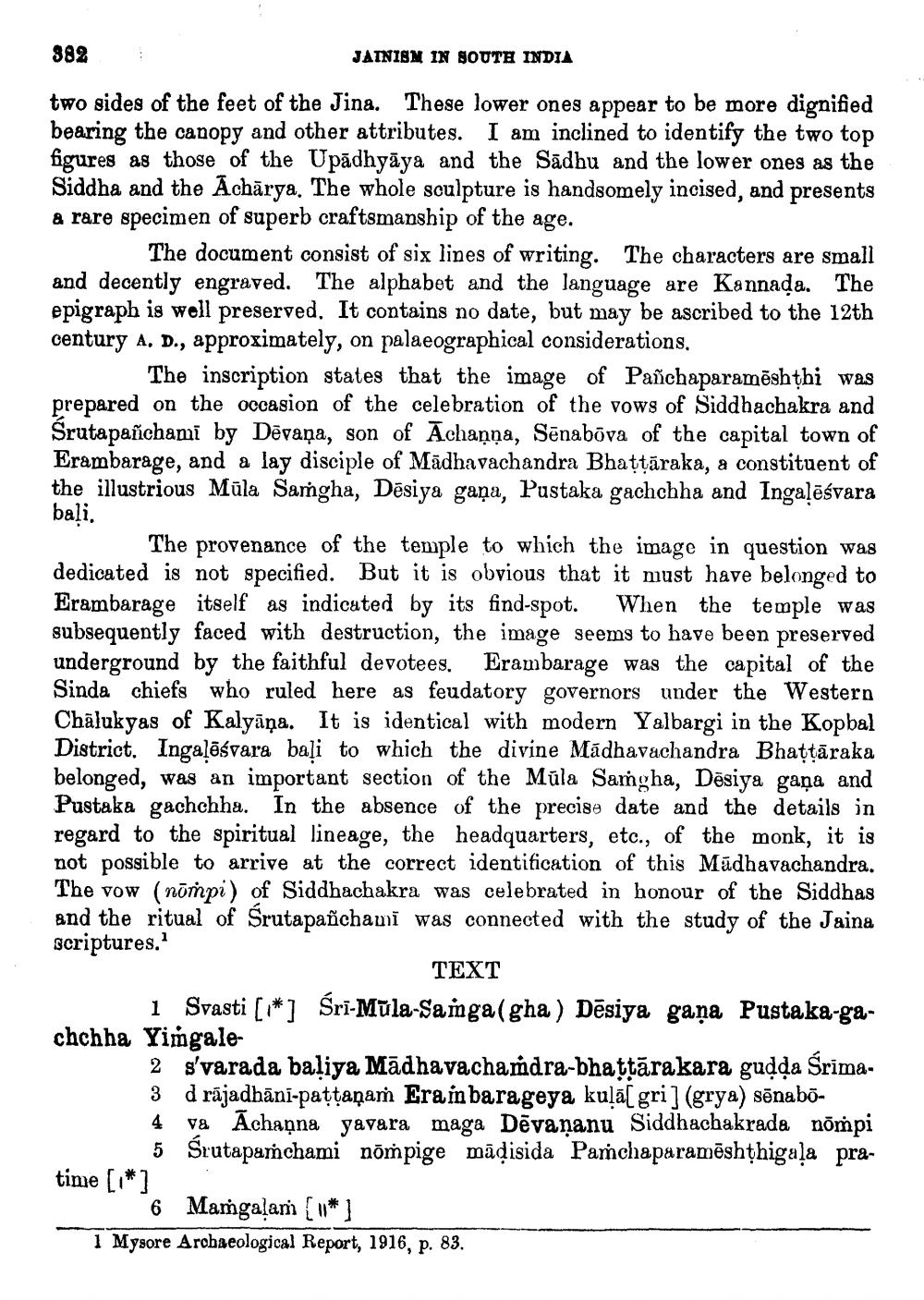________________
382
JAINISM IN SOUTH INDIA
two sides of the feet of the Jina. These lower ones appear to be more dignified bearing the canopy and other attributes. I am inclined to identify the two top figures as those of the Upādhyāya and the Sādhu and the lower ones as the Siddha and the Achārya. The whole sculpture is handsomely incised, and presents a rare specimen of superb craftsmanship of the age.
The document consist of six lines of writing. The characters are small and decently engraved. The alphabet and the language are Kannada. The epigraph is well preserved. It contains no date, but may be ascribed to the 12th century A. D., approximately, on palaeographical considerations.
The inscription states that the image of Pañchaparamēshthi was prepared on the occasion of the celebration of the vows of Siddhachakra and Srutapanchami by Dēvaņa, son of Achaņņa, Sēnabõva of the capital town of Erambarage, and a lay disciple of Mādhavachandra Bhattāraka, a constituent of the illustrious Mūla Saṁgha, Dēsiya gaña, Pustaka gachchha and Ingalēśvara
bali.
The provenance of the temple to which the image in question was dedicated is not specified. But it is obvious that it must have belonged to Erambarage itself as indicated by its find-spot. When the temple was subsequently faced with destruction, the image seems to have been preserved underground by the faithful devotees. Erambarage was the capital of the Sinda chiefs who ruled here as feudatory governors under the Western Chālukyas of Kalyāņa. It is identical with modern Yalbargi in the Kopbal District. Ingalāśvara baļi to which the divine Mădhavachandra Bhattāraka belonged, was an important section of the Müla Samgha, Dēsiya gana and Pustaka gachchha. In the absence of the precise date and the details in
the spiritual lineage, the headquarters, etc., of the monk, it is not possible to arrive at the correct identification of this Madhavachandra The vow (nompi) of Siddhachakra was celebrated in honour of the Siddhas and the ritual of Śrutapanchami was connected with the study of the Jaina scriptures.
TEXT i Svasti [1*] Śri-Müla-Saiga (gha) Dēsiya gaņa Pustaka-gachchha Yimgale
2 s'varada baliya Mādhavachaṁdra-bhattārakara gudda Śrima3 d rājadhāni-pattaņam Era in barageya kulās gri] (grya) sēnabo4 va Achaạna yavara maga Dēvananu Siddhachakrada nõmpi
5 Srutapaṁchami nompige māļisida Pamchaparamāshthigala pratime [i*]
6 Mangalam ( 1 * ] 1 Mysore Archaeological Report, 1916, p. 83.




